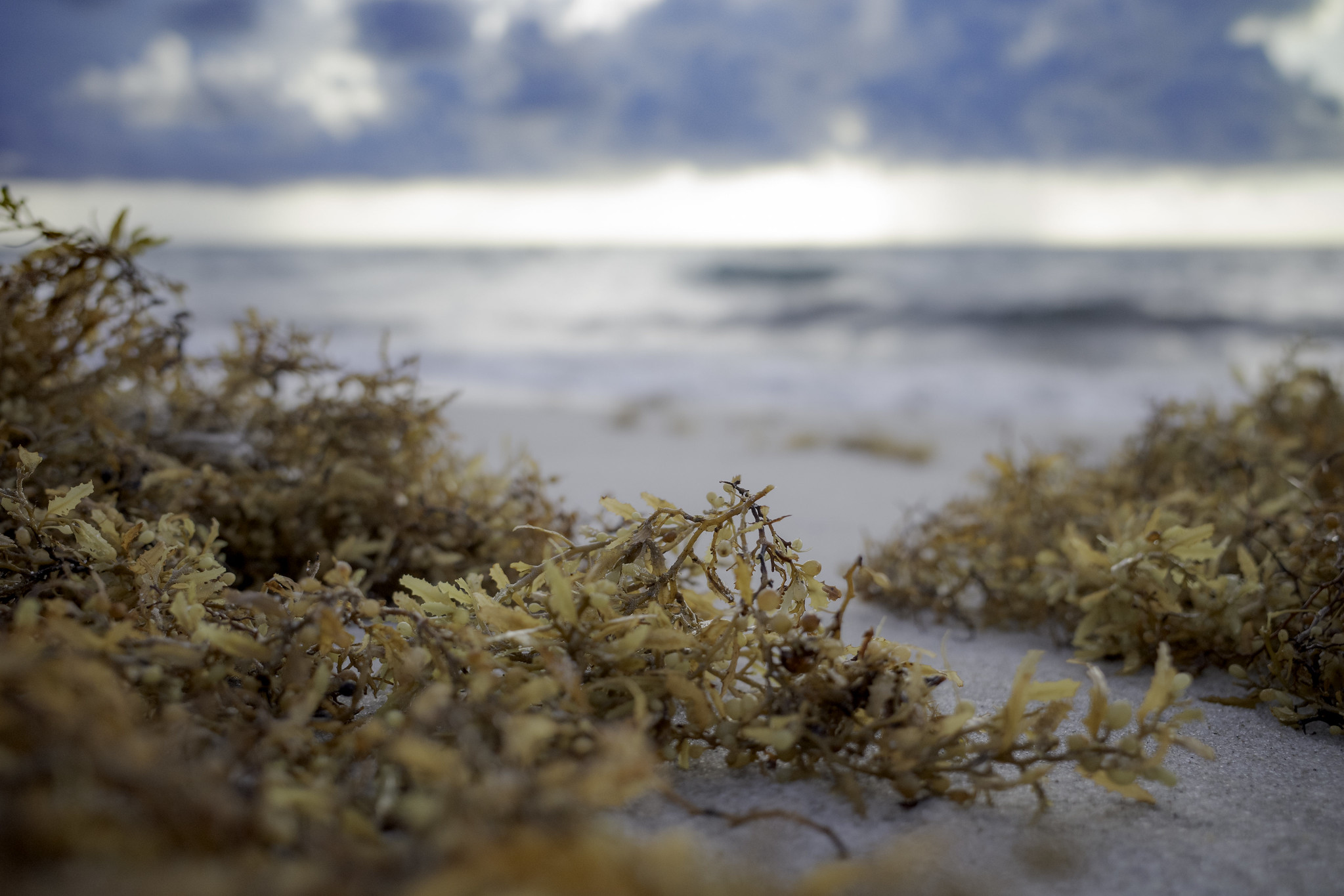Excerpt:
“The effects are very, very local…You’ll see a huge, unbelievable amount of sargassum in one little bay, but if you look past that into the next bay, there’s absolutely no sargassum.” – Brian Barnes, researcher, College of Marine Science, University of South Florida.
It used to be that the conversation around subtropical marine life centered on declines: the death of coral beds, the diminishing variety of seagrasses, the disappearance of fish.
But for now, it’s an overabundance that’s hard to miss. From Montego to Miami, an influx of algae called sargassum is leaving stinky brown carpets over what was once prime tourist sand. It’s the most sargassum researchers have tracked this early in the year.
Deciding what to do with it is proving more challenging the more we learn about it — and inspiring some entrepreneurs to rethink removing sargassum altogether.
Sargassum is a type of buoyant, rootless algae that bunches up in islands and floats around the ocean.
Patches of sargassum have been spotted in the Atlantic Ocean for centuries, but since 2011, a 5,000-mile-long belt of the seaweed has circulated annually between the Gulf of Mexico and the mid-Atlantic.
The density of that belt’s clusters keeps increasing, possibly because modern agriculture techniques are sending more and more nutrients downstream and into the ocean.
Just this April, sargassum levels in the Caribbean Sea reached a new record, with the overall belt growing to an estimated 13 million tons.
And the top bloom season is still days away, with a peak likely to hit in June or July. If the past is precedent, the size of the belt in July could be double what it is in April, says Brian Barnes, a researcher at USF’s College of Marine Science.
It’s hard to predict what this could mean for beaches, especially in the eastern Atlantic where persistent clouds are obscuring the satellite views that Barnes and his team rely on.
But already, sargassum beachings are increasing, with the southern regions of Hispaniola, Jamaica and Puerto Rico looking likely to be the most impacted.
Once ashore, sargassum isn’t just unsightly or cumbersome to swim around — it stinks. The seaweed starts to decay within 24 hours of hitting the shore, releasing hydrogen sulfide and the smell of rotten eggs.
There’s some evidence to show that those gases can cause nausea and headaches or aggravate respiratory issues. In 2018, doctors on the islands of Guadeloupe and Martinique reported more than 11,000 cases of “acute sargassum toxicity” during an eight-month period of intense beach buildup, But even the smell alone can be costly…
Also of Interest:
Meet the sargassum belt, a 5,000-mile-long snake of seaweed circling Florida
The Great Atlantic Sargassum Belt, the Ocean Race
(05-07-2023)
Sargassum crisis: Fishermen in Martinique develop solutions, Al Jazeera English (05-01-2023)









